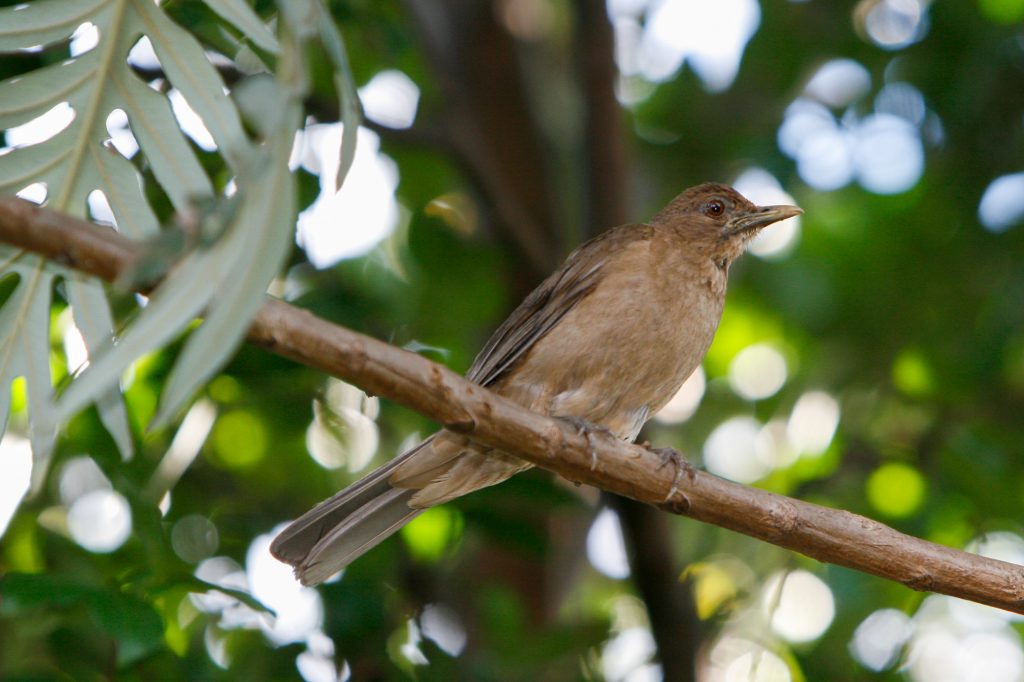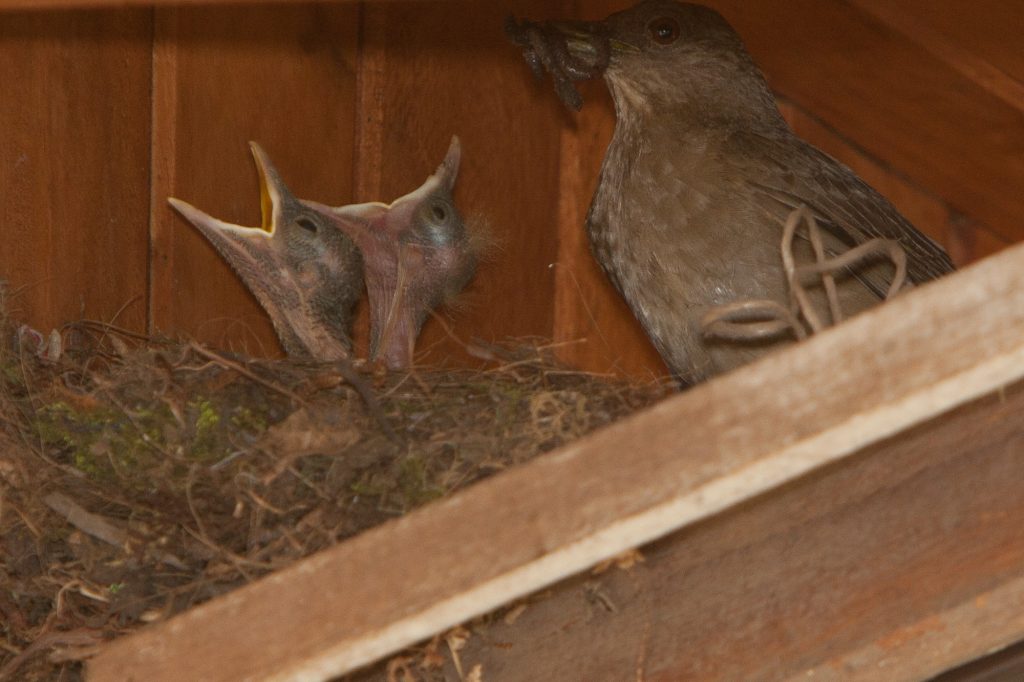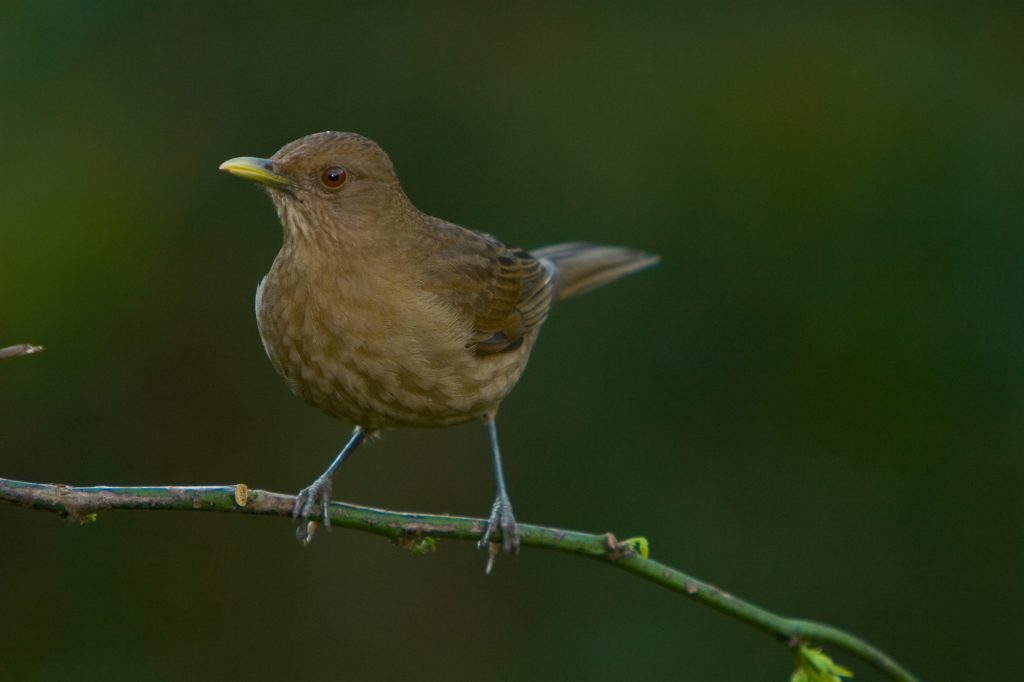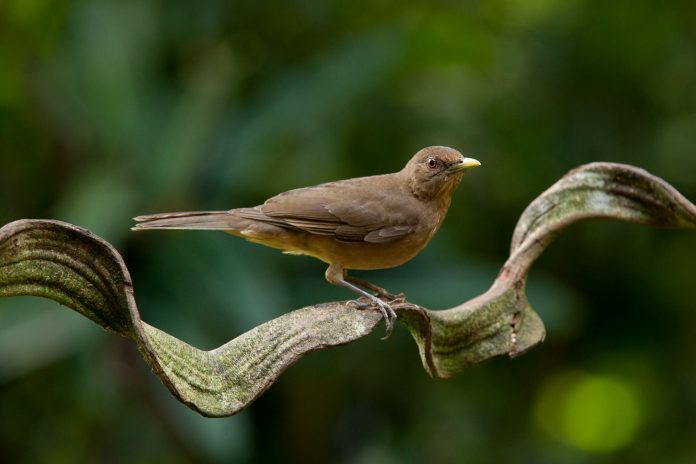Let us introduce to you the famous Yigüirro. Yes, this simple bird is famous: it is the national bird of Costa Rica. You might wonder why this bird would be chosen as the national bird of any country in the world. Well, believe it or not, there are two very good reasons.
The first is that you can find the Clay-colored robin, as the Yigüirro is called in English, almost anywhere in Costa Rica. Only in the highlands (above 7800 feet or 2400 meters above see level) it is very hard to ran into a Yigüirro.
I personally can give faith to the ubiquitous nature of this bird, because when I say you can find it anywhere in Costa Rica, that especially applies to my parent’s house, where the Yigüirro, if you ask me, it sometimes feel like a plague.
They simply love that house. They have everything they need and like. They have food: a few fruit trees in the backyard and a lot of dog food. Yes, they love to eat my boxer’s lamb-and-rice food.

Then, they have enough open areas to hop around in typical robin fashion. For example, they love to fly inside the living-dining room, and then hop around from chair to sofa to chair. The problem with this is that when they realize that they are in a little glass jail, they get scared and combine the hopping around with… well, doing what animals sometimes do out of fear. As a result, we have yigüirro droppings all around our furniture and floor (don’t get it wrong, we clean it, but it always reappears!).
And last but not least, they have many places around the house where they can make their nests, and those are not necessarily tree branches. I think we have seen at least 25 Yigüirro families grow up under the eaves over our court yard.
The first time they tried to nest there it was a complete disaster. You could see them flying back and forth from the backyard carrying branches and moss and leaves for the construction, and every time it would all fall down. So my mother got all sentimental, and she made my dad build two platforms (with landing branches and all) under the eaves so the birds could make their nests. My father now calls this structures “the apartments.”
Of course that first year all the birds took flight. Imagine if you saw a giant putting an unidentified object in your home-to-be. You would flee too. But the year that followed (and every single one after that), when the nesting season started we have seen couples of Clay-colored Robins making nests.

The second reason to choose this brown bird as the national bird is that it has a powerful and beautiful song that is more common right when the rainy season is going to start. So if you are a farmer, you can believe that this bird’s song only means good news!
The song is low-keyed with a slow steady tempo; it repeats irregularly many slurred musical phrases, according to my bird book. Can you hear it? I bet not, it is not a very good description, but if you ask any Costa Rican around you, they can probably pinch you next time they hear it!
Probably, even after reading this explanation, you might not be convinced that the Yigüirro deserves to be Costa Rica’s national bird. It is true; we do have a lot of spectacularly beautiful flying creatures that will be more impressive to our visitors. But think twice. We Costa Ricans are also like the robin: little, brownish, gentle creatures that you can find anywhere in this country and that will smile to you, the way the Clay-colored Robin will sing: powerfully, beautifully and irregularly.




